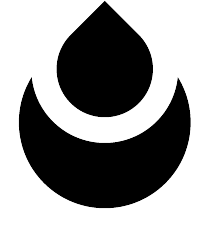Introduction to Physiotherapy for Sports Injuries
Physiotherapy plays a pivotal role in the recovery and rehabilitation of sports injuries. For athletes, both amateur and professional, it is essential to understand the significance of physiotherapy and how it can benefit your overall health and sports performance.
Importance of Physiotherapy in Sports Injury Recovery
When it comes to recovering from a sports injury, physiotherapy offers a structured and effective approach. The primary goal of physiotherapy is to restore function and mobility, minimizing pain and discomfort. Here’s how physiotherapy contributes to sports injury recovery:
- Pain Management: Pain reduction using techniques like manual therapy and modalities.
- Restoration of Movement: Techniques to help regain normal movement patterns.
- Strength Building: Exercises to strengthen the muscles around the injured area.
- Injury Prevention: Focusing on strategies to prevent future injuries.
| Benefit | Description |
|---|---|
| Pain Management | Techniques aimed at reducing pain levels. |
| Restoration of Movement | Exercises and treatments to improve movement. |
| Strength Building | Muscle-strengthening exercises. |
| Injury Prevention | Educational approaches for preventing future injuries. |
Benefits of Physiotherapy for Athletes
Physiotherapy isn’t just about recovery; it offers numerous benefits that can enhance an athlete’s performance and overall well-being:
- Improved Performance: Exercises tailored to optimize performance.
- Enhanced Flexibility: Stretching routines that improve mobility.
- Injury Prevention: Education on safe practices to avoid injuries.
- Faster Recovery: Accelerated healing process through specialized techniques.
Athletes can experience a range of advantages by incorporating physiotherapy into their regimen. It helps in maintaining physical fitness while ensuring that injuries are managed effectively. If you’re looking to find a provider, consider factors such as qualifications and expertise, which we cover in our detailed article on physiotherapy near me.
Explore specific physiotherapy exercises and treatment techniques in our comprehensive guide on physiotherapy treatment.
Common Sports Injuries Requiring Physiotherapy
Understanding the Types of Sports Injuries
Sports injuries are an unfortunate but common occurrence for many athletes. Understanding the different types of sports injuries can help you identify and seek prompt treatment. Here are some prevalent sports injuries that often require physiotherapy:
- Sprains and Strains: Injuries to ligaments (sprains) or muscles/tendons (strains).
- Knee Injuries: Including ACL tears, meniscus injuries, and patellar tendinitis.
- Shoulder Injuries: Such as rotator cuff injuries and shoulder dislocations.
- Fractures: Broken bones that often occur in contact sports.
- Tendonitis: Inflammation of a tendon, common in sports with repetitive motions.
- Shin Splints: Pain along the shin bone, often seen in runners.
- Back Injuries: Including lower back pain and herniated discs.
- Tennis Elbow: Inflammation of the tendons in the elbow due to repetitive use.
| Injury Type | Description |
|---|---|
| Sprains and Strains | Ligament or muscle/tendon injuries |
| Knee Injuries | ACL tears, meniscus injuries, patellar tendinitis |
| Shoulder Injuries | Rotator cuff injuries, dislocations |
| Fractures | Broken bones |
| Tendonitis | Inflammation of tendons |
| Shin Splints | Pain along shin bone |
| Back Injuries | Lower back pain, herniated discs |
| Tennis Elbow | Inflammation of elbow tendons due to repetitive use |
How Physiotherapy Can Help in Specific Cases
Physiotherapy plays a vital role in the recovery and rehabilitation of sports injuries. By employing various techniques, physiotherapists help reduce pain, restore function, and prevent future injuries. Here’s how physiotherapy can aid in specific cases:
- Sprains and Strains: Therapeutic exercises and manual therapy to restore flexibility and strength. Learn more about physiotherapy exercises.
- Knee Injuries: Strengthening and mobility exercises tailored to the specific knee condition. For detailed guidance, read physiotherapy for knee pain.
- Shoulder Injuries: Techniques like functional exercises and manual therapy to improve range of motion. Explore physiotherapy for shoulder pain.
- Fractures: Post-cast removal rehabilitation to regain mobility and strength.
- Tendonitis: Eccentric exercises, stretching, and modalities like ultrasound therapy.
- Shin Splints: Specific strengthening and stretching routines along with gait training. You might want to check out physiotherapy for shin splints.
- Back Injuries: Core strengthening exercises, spinal mobilization, and ergonomic advice. Learn about physiotherapy for back pain.
- Tennis Elbow: Combination of manual therapy, braces, and specific strengthening exercises. Gain more insights from physiotherapy for tennis elbow.
Different injuries require specific approaches, but the ultimate goal of physiotherapy remains the same: to facilitate a return to normal function and prevent recurrence. Finding the right physiotherapy treatment can make a significant difference in your recovery journey.
The Role of a Physiotherapist
Physiotherapists play an essential role in helping athletes recover from sports injuries. Their expertise ensures that you receive the best care tailored to your specific needs.
Qualifications and Expertise
Physiotherapists are highly trained healthcare professionals who specialize in diagnosing and treating conditions related to movement and function. To become a physiotherapist, they must complete a degree in physiotherapy, which typically includes both theoretical and practical training. Many also pursue advanced certifications or specializations to further hone their skills in areas such as sports physiotherapy or orthopedic physiotherapy.
| Qualification | Description |
|---|---|
| Bachelor’s Degree in Physiotherapy | Foundational education covering anatomy, physiology, and therapeutic techniques. |
| Master’s Degree in Physiotherapy | Advanced study focusing on specialized fields and research. |
| Clinical Internships | Hands-on experience in treating patients under supervision. |
| Continuing Education | Ongoing learning to stay updated on the latest techniques and practices. |
Physiotherapists often have additional expertise in specific forms of treatment, including manual therapy, exercise prescription, and the use of therapeutic modalities. This diverse skill set allows them to develop effective treatment plans for a variety of sports injuries.
Personalized Treatment Plans
One of the key strengths of physiotherapy is the creation of personalized treatment plans tailored to your unique needs. When you first visit a physiotherapist, they will conduct a comprehensive assessment to understand the extent of your injury and any underlying issues. This may include physical exams, medical history reviews, and functional movement analyses.
Based on this assessment, the physiotherapist will design a treatment plan that addresses your specific injury and helps you achieve your recovery goals. This plan often includes a combination of different therapies, such as:
- Physical Therapy Exercises: Targeted exercises to strengthen muscles, improve flexibility, and restore function. For more information, see our guide on physiotherapy exercises.
- Manual Therapy: Hands-on techniques to manipulate and mobilize soft tissues and joints.
- Modalities: Use of equipment, such as ultrasound or electrical stimulation, to relieve pain and promote healing. Learn more in our article on physiotherapy treatment.
Your treatment plan will be regularly reviewed and adjusted based on your progress. The goal is to ensure that you recover as fully and quickly as possible, while also providing education on preventative measures to avoid future injuries. For tips on maintaining your progress after therapy, check out our article on continuing care and maintenance.
By understanding the expertise and personalized care offered by physiotherapists, you can make informed decisions about your path to recovery. Whether you’re dealing with a specific injury or looking for preventative care, finding the right physiotherapy provider is crucial. To get started, visit our guide on finding physiotherapy near me.
Treatment Techniques in Physiotherapy
Understanding the variety of treatment techniques available in physiotherapy is essential for effective recovery from sports injuries. These techniques range from targeted exercises to hands-on manual therapy and advanced modalities.
Physical Therapy Exercises
Physical therapy exercises are cornerstone interventions in physiotherapy for sports injuries. These exercises are designed to improve strength, flexibility, and range of motion. Your physiotherapist will guide you through a series of exercises tailored to your specific injury and recovery goals.
Common exercises include:
- Strengthening Exercises: Target muscle groups to enhance stability.
- Stretching Exercises: Improve flexibility and prevent stiffness.
- Balance Exercises: Enhance proprioception and prevent future injuries.
For an extensive list of exercises, refer to our article on physiotherapy exercises.
Manual Therapy Techniques
Manual therapy involves hands-on techniques to mobilize joints and soften tissues. These techniques can be highly effective for pain relief and improving mobility.
Popular manual therapy techniques include:
- Joint Mobilization: Gentle movements to improve joint function.
- Soft Tissue Massage: Reduces muscle tension and improves blood circulation.
- Trigger Point Therapy: Targets specific points to alleviate pain.
These techniques are particularly useful for conditions such as physiotherapy for back pain and physiotherapy for shoulder pain.
Modalities Used in Physiotherapy
Various modalities are employed to complement exercises and manual therapy. These modalities use different forms of energy to reduce pain, enhance healing, and improve function.
Common modalities include:
| Modality | Purpose | Example Conditions |
|---|---|---|
| Ultrasound | Accelerates tissue healing | physiotherapy for knee pain |
| TENS (Transcutaneous Electrical Nerve Stimulation) | Pain relief | physiotherapy for sciatica |
| Heat Therapy | Relieves muscle tension and pain | physiotherapy for arthritis |
| Cryotherapy | Reduces inflammation and swelling | physiotherapy for ankle sprains |
Using a combination of these techniques, your physiotherapist will craft a comprehensive treatment plan tailored to your unique needs. For more information on finding a qualified physiotherapist, see our guide on physiotherapy near me.
Understanding the various treatment techniques in physiotherapy empowers you to take an active role in your recovery journey. By participating in a well-rounded treatment plan, you can optimize your rehabilitation and return to your sport stronger than before.
Rehabilitation and Beyond
Post-Injury Rehabilitation Process
The post-injury rehabilitation process is a critical phase in your recovery journey. This phase ensures that you regain strength, flexibility, and functionality. Here’s what you can generally expect:
- Initial Assessment:
- Detailed evaluation by your physiotherapist to understand the extent of the injury.
- Setting realistic recovery goals.
- Treatment Plan:
- Customized exercises tailored to your specific needs.
- Possible use of manual therapy and equipment-based modalities.
- Progress Monitoring:
- Regular follow-up sessions.
- Adjustments to your treatment plan based on progress.
| Stage | Focus | Duration (Weeks) |
|---|---|---|
| Inflammatory | Pain relief, reduce swelling | 1-2 |
| Reparative | Regain range of motion | 3-6 |
| Remodeling | Strengthening, functional exercises | 6-12 |
| Maturation | Advanced strengthening, sport-specific activities | 12+ |
Preventative Measures for Future Injuries
Preventing future injuries is essential to maintain your physical health and avoid setbacks. Here are some preventative measures that can help:
-
Strength and Conditioning Programs:
Engage in exercises designed to strengthen muscles and joints. -
Proper Warm-Up and Cool-Down:
Make these routines a part of your daily exercise to prepare and recover your muscles. -
Correct Techniques:
Ensure you use proper techniques during activities to prevent strain and overuse injuries. -
Use of Protective Gear:
Always use appropriate protective gear during sports activities to minimize the risk of injury.
For more insights, explore our sports physiotherapy section.
Continuing Care and Maintenance
Continuing care and maintenance are vital even after you’ve recovered from your initial injury. This ongoing care helps maintain your fitness level and prevents re-injury.
- Regular Check-Ups:
- Periodic visits to your physiotherapist for assessments.
- Early intervention if potential issues are identified.
- Consistent Exercise Regimen:
- Sustain an exercise routine focusing on flexibility and strength.
- Include physiotherapy exercises tailored to your needs.
- Lifestyle Modifications:
- Maintain a balanced diet to support muscle repair and growth.
- Practice good posture and ergonomics.
Maintaining communication with your physiotherapist and adhering to the recommended guidelines can significantly impact your long-term health. If you’re looking for a reliable provider, consider these factors to consider when choosing a physiotherapist.
Finding the Right Physiotherapy Provider
Factors to Consider in Choosing a Physiotherapist
Selecting the best physiotherapist for your sports injury is vital for effective recovery. Here are some key factors to consider:
- Qualifications and Credentials: Ensure the physiotherapist is licensed and holds relevant qualifications.
- Experience with Sports Injuries: Look for a provider who has significant experience in treating sports-related injuries.
- Specialization: Some physiotherapists specialize in specific areas like physiotherapy for knee pain or physiotherapy for shoulder pain.
- Treatment Techniques: Ensure the clinic offers a range of techniques such as manual therapy techniques and physiotherapy exercises.
- Location and Accessibility: Consider proximity and ease of access to the physiotherapy clinic.
- Reviews and Testimonials: Check patient reviews and testimonials for insights into the clinic’s quality of care.
| Factor | Importance |
|---|---|
| Qualifications | High |
| Experience | High |
| Specialization | Medium |
| Treatment Techniques | High |
| Location | Medium |
| Reviews & Testimonials | High |
Questions to Ask When Seeking Physiotherapy Services
To make an informed decision, ask the following questions when consulting a physiotherapist:
- What are your qualifications and certifications?
- What is your experience in treating my specific injury?
- What treatment methods do you use?
- How do you develop personalized treatment plans?
- What should I expect during the recovery process?
- Are there any additional costs I should be aware of?
- Can you provide references or patient testimonials?
- Do you offer specialized services for conditions like physiotherapy for back pain or physiotherapy for sciatica?
For more detailed insights on choosing the right physiotherapy provider, visit our article on physiotherapy near me.
By asking the right questions and considering key factors, you can ensure you receive the best care for your sports injuries, aiding in a smoother and more effective recovery process.














